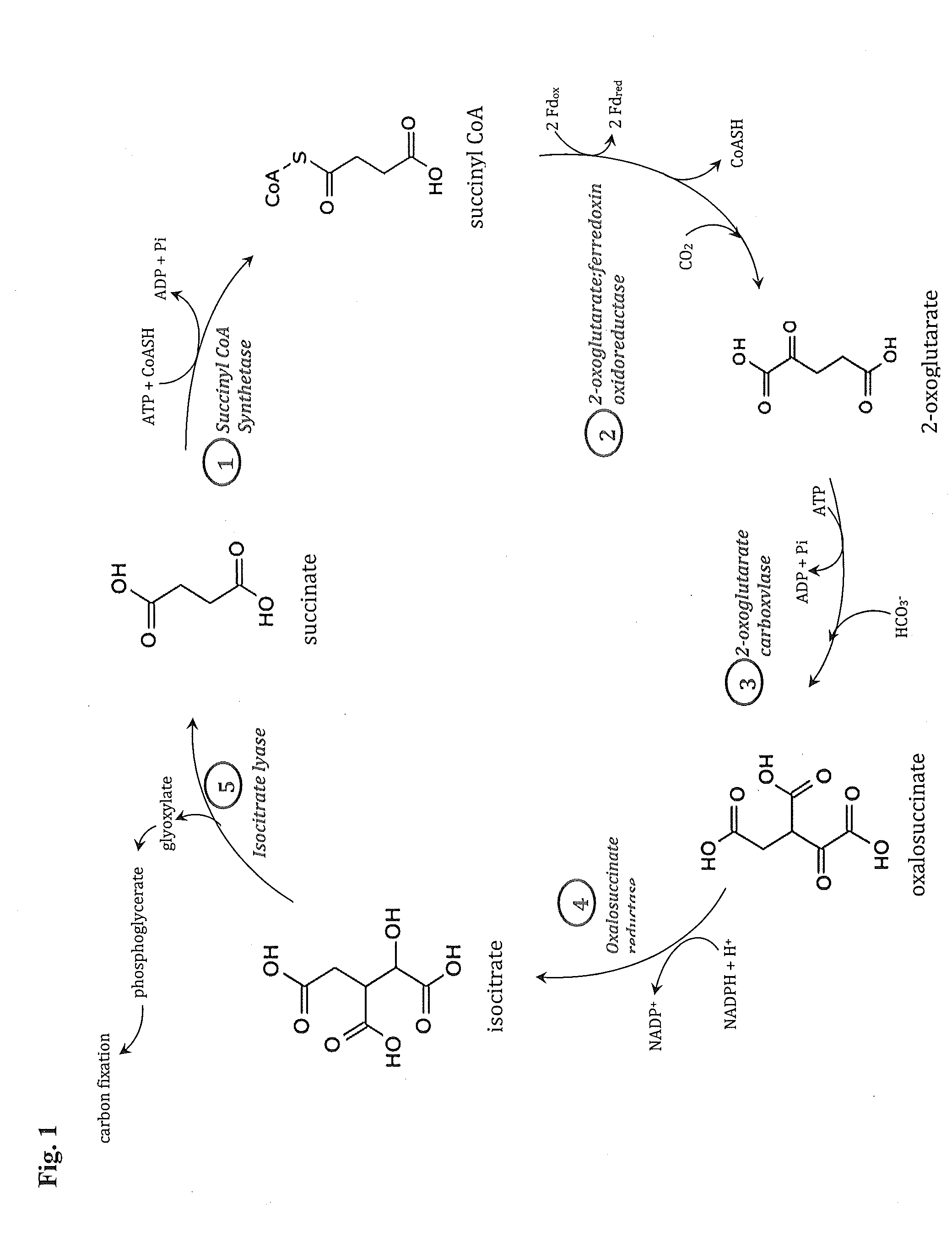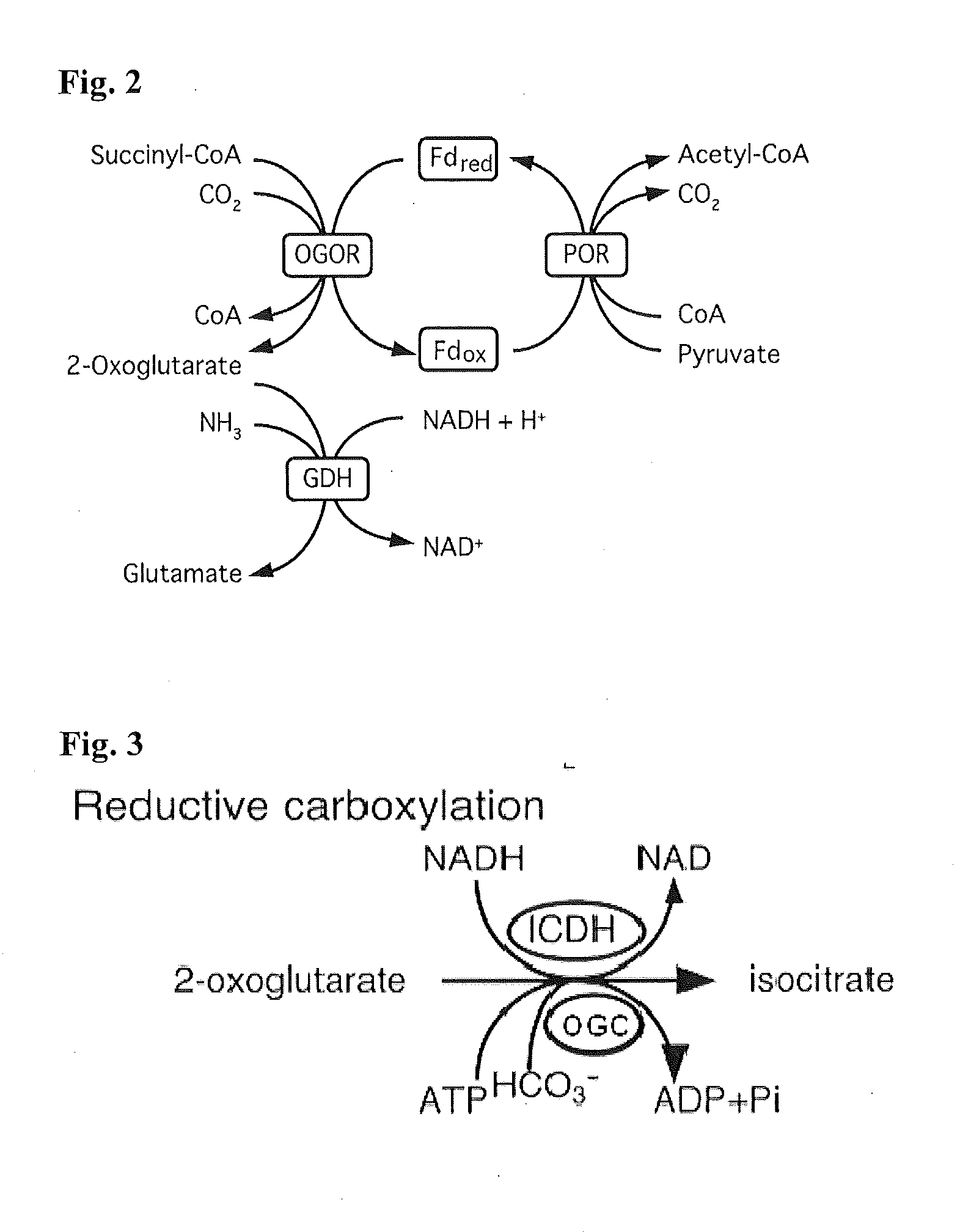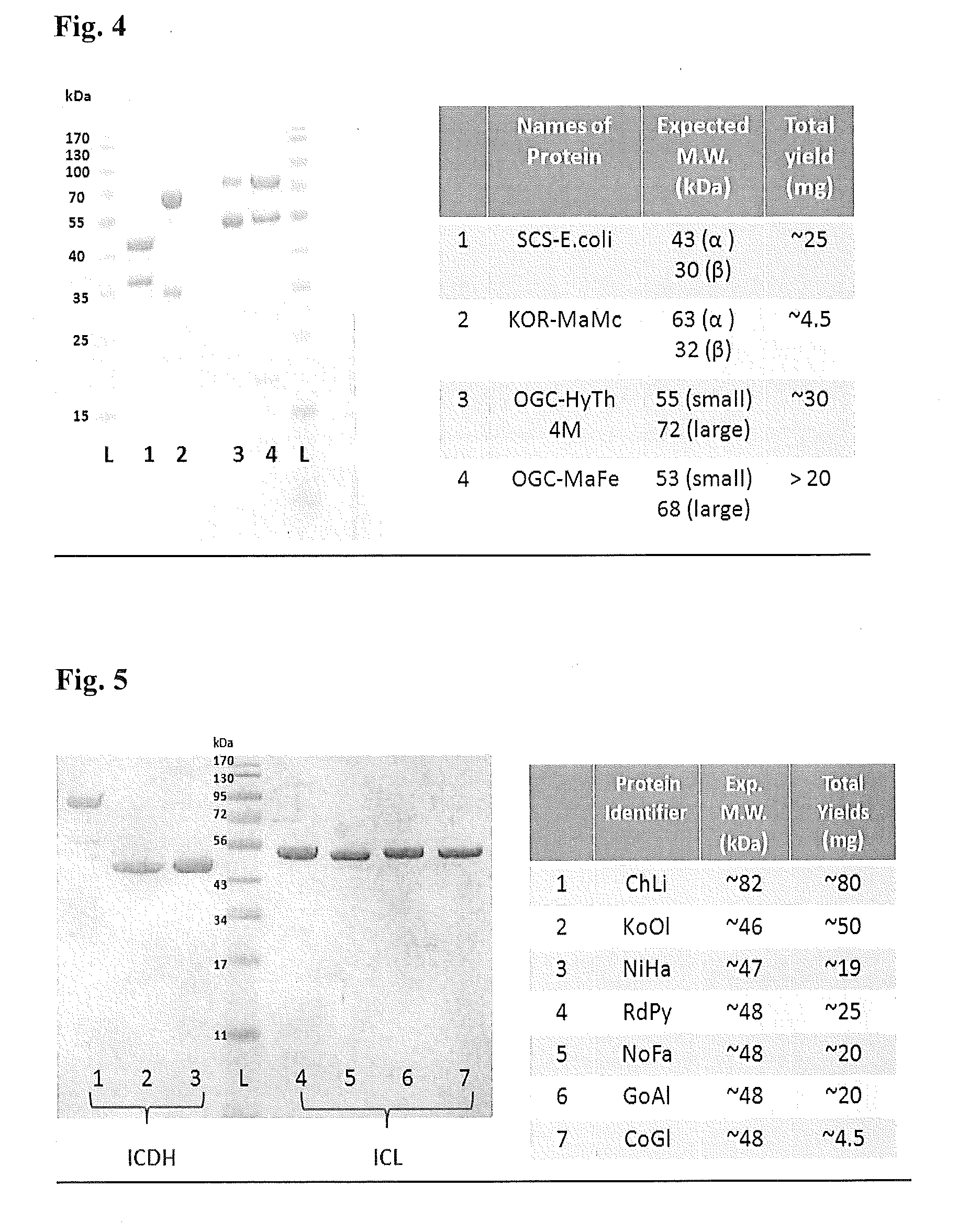Synthetic Pathway for Biological Carbon Dioxide Sequestration
a carbon dioxide and bioenergy technology, applied in the direction of tissue culture, plant products, plant/algae/fungi/lichens ingredients, etc., can solve the problems of net loss of carbon, inefficient process, and inability of c3 plants to grow efficiently in hot and/or dry areas, so as to improve the efficiency of co2 fixation and increase biomass production in plants
- Summary
- Abstract
- Description
- Claims
- Application Information
AI Technical Summary
Benefits of technology
Problems solved by technology
Method used
Image
Examples
example 1
The Synthetic crTCA Pathway Enzymes
[0220]Increasing the productivity of a C3 plant such as camelina to levels seen for C4 plants (e.g. corn) requires improving photosynthetic carbon fixation. One limiting factor is the oxygenase activity of the CO2-fixing Ribulose 1,5 bisphosphate Carboxylase / Oxygenase (RUBISCO) that reduces the photosynthetic productivity by up to 30%. The present invention provides methods and compositions for improving carbon fixation in plants by introducing a synthetic carbon fixation pathway that is independent of RUBISCO but works in concert with the existing Calvin Benson cycle.
[0221]Specifically, this invention provides a “condensed reverse TCA (crTCA) cycle,” that employs a (1) succinyl-CoA synthetase for catalyzing the conversion of succinate to succinyl-CoA, (2) a 2-oxoglutarate:ferredoxin oxidoreductase for converting succinyl-CoA to 2-oxoglutarate (i.e., 2-ketoglutarate), (3) a 2-oxoglutarate carboxylase for converting 2-oxoglutarate to oxalosuccinate,...
example 2
Expression of the crTCA Pathway in E. coli
[0231]The crTCA pathway will be expressed first in E. coli to verify CO2 fixation. The genes encoding the crTCA cycle selected enzymes will then be analyzed for optimal codon usage in camelina and synthetic versions made as necessary. These will then be introduced into camelina singly or as a polygene cluster construct.
[0232]The specific enzymes to be used initially in the crTCA pathway include succinyl-CoA synthetase from E. coli version (SucC, SucD) (Buck et al. J Gen Microbiol. 132(6):1753-62 (1986)) (see, e.g., the nucleotide sequence of SEQ ID NO:3 (amino acid sequences of SEQ ID NO:1 and SEQ ID NO:2)). An oxoglutarate:ferredoxin oxidoreductase (OOR) from Paenibacillus larvae subsp. larvae B-3650 (see, e.g., the nucleotide sequence of SEQ ID NO:24; amino acid sequences of SEQ ID NO:22 and SEQ ID NO:23) will be used.
[0233]Using a mesophilic carboxylase enzyme from a nitrite-oxidizing bacterium, Candidatus Nitrospira defluvii, amino acid...
example 3
Expression of the Synthetic crTCA Pathway in Camelina sativa
[0255]The oilseed crop Camelina sativa (L.) Crantz has been naturalized to almost all of the United States (United States Department of Agriculture USDA, N.R.C.S. Plant Database. 2011). It is grown in rotation either as an annual summer crop or biannual winter crop. It is adapted to a wide range of temperate climates on marginal land, is drought and salt tolerant, and requires very little water or fertilizer. Its seeds have a high oil content (≧40%) that can be extracted by energy efficient cold pressing. The remaining omega-3 fatty acid-rich meal has been approved by the FDA for inclusion in livestock feed. A further advantage is that camelina does not compete for land with food crops and produces feed for livestock as well as productivity (and jobs) on unfarmed land. Camelina further has a short life cycle and can produce up to four generations per year in greenhouses.
[0256]Camelina sativa will be genetically engineered ...
PUM
| Property | Measurement | Unit |
|---|---|---|
| temperature | aaaaa | aaaaa |
| pH | aaaaa | aaaaa |
| pH | aaaaa | aaaaa |
Abstract
Description
Claims
Application Information
 Login to View More
Login to View More - R&D
- Intellectual Property
- Life Sciences
- Materials
- Tech Scout
- Unparalleled Data Quality
- Higher Quality Content
- 60% Fewer Hallucinations
Browse by: Latest US Patents, China's latest patents, Technical Efficacy Thesaurus, Application Domain, Technology Topic, Popular Technical Reports.
© 2025 PatSnap. All rights reserved.Legal|Privacy policy|Modern Slavery Act Transparency Statement|Sitemap|About US| Contact US: help@patsnap.com



